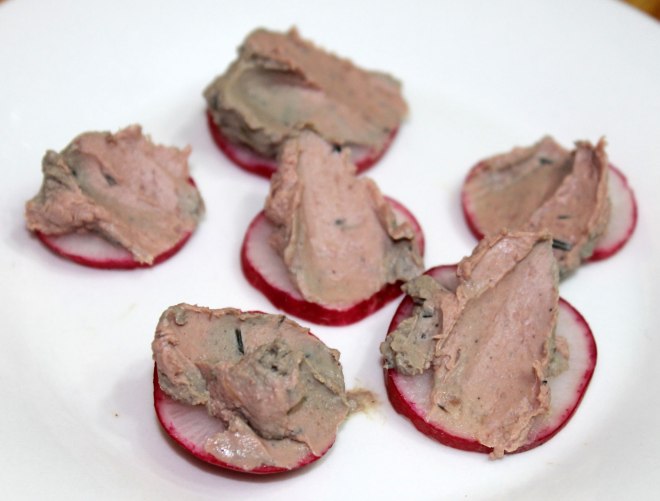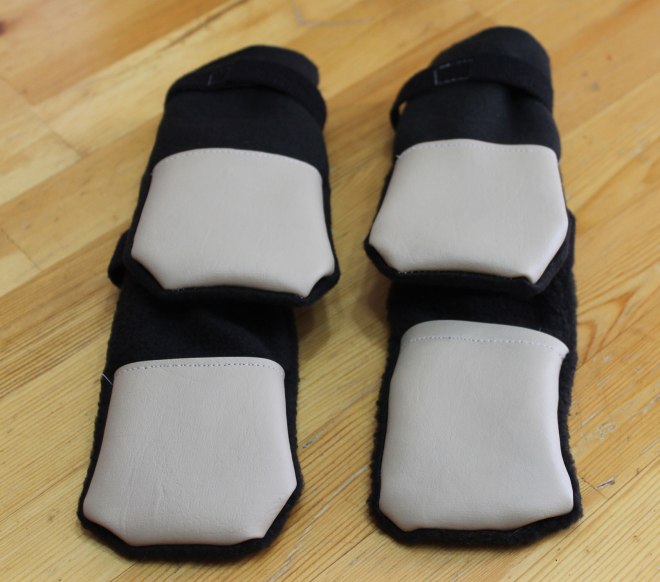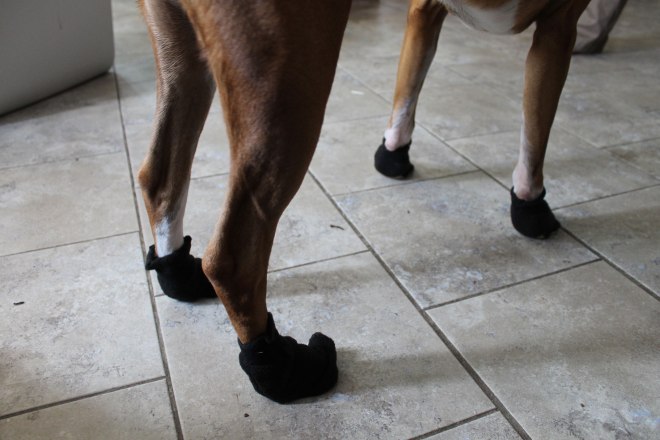The other day, I posted about how I had packed salad rolls in our packed lunches – traditional rice-noodle filled ones for the kids

and veggie filled ones for A, Hubby and me.

Before anyone points it out, I know that salad rolls are not Paleo because they contain rice noodles and rice paper, they are not even particually low carb (although the veggie filled ones that Hubby and I ate were lower in carbs than the kids ones)… but sometimes you just want a little “treat” and rice is considered the best of all the grains if you want extra carbs in your paleo diet… Besides, I calculated that one portion of 3 of the veggie filled salad rolls only contained 35g of carbs… not bad all things considering! Obviously the ones with the rice noodles inside them contained far more.
These salad rolls were actually made by A the day before we ate them for lunch, and they were individually wrapped in clingwrap to stop them sticking together or drying out.
These are a little fiddly to make, but well within the skill level of an older teen. A learned to make these in her foods class at school.
And this is how she made them:
Shrimp Salad Rolls
I apologize for the ingredients being a little vague – quantities all depends on how many rolls you want to make. A made 18, 3 for each person.
- shrimp (cooked and peeled). You need 3 per salad roll that you want to make
- julienned vegetables (we used cucumber, carrot, green onions and red pepper)
The first step is to prepare all your ingredients… you need to soak the rice noodles in some boiling water until they have softened. This will take around 10 minutes.
A used this brand of noodles which I bought for less than $2 a packet from an Asian supermarket. They contain nothing but rice flour and water.

This 1lb packet has made 2 batches of rice noodles so far and is still more than 3/4 full…
Then you need to shred the lettuce and julienne any vegetables that you are planning on using. We used green onions, red pepper, carrots and cucumber. Don’t worry about exact quantities – if you don’t prepare enough veggies you can always do some more part way through.
Make sure the shrimp are thawed (if using frozen shrimp) and peeled.
Now you take your rice paper….
You want rice paper that contains no nasty ingredients. Ours was this brand:

which I purchased from the same Asian supermarket as the rice noodles. This brand contains only rice, water and salt.
Like the rice noodles, this 1lb pack cost less than $2 and we have used approximately half of it to make 2 batches of salad rolls.
You take your rice paper, which is a round, semi-opaque textured circle:

and you dip it into cold water until it becomes translucent and starts to soften.

Don’t let it become totally soft or it will be difficult to work with. Remove it from the water before this happens:

and lay it out on a cutting board (a plastic one works better than a wooden/bamboo one as the rice paper tends to stick to these)

For traditional Vietnamese rice-noodle filled salad rolls, you now take your softened rice noodles and drain them from the hot water. They should be soft but not sticky.
Place a small bundle of rice noodles towards one side of the rice paper. Don’t be too generous, you don’t want to overfill your salad rolls. A placed a mound no more than 1″ thick and 4″ long.

Add a small amount of shredded lettuce and some of the julienned vegetables:

And then top the rice noodles with 3 of the shrimp:

The next step is to roll the rice paper around the filling.
First you need to fold in the 2 sides:


Then starting at the end nearest the filling you begin to roll it up:

Roll it nice and firmly, but be careful not to tear the rice paper – it is very delicate!

Continue rolling until you reach the end of the rice paper and you have a nice neat roll:

Repeat with the remaining ingredients.
If planning on serving these immediately, they are now ready to be served with the dipping sauce of your choice. If wanting them for packed lunches or to serve later in the day, I recommend that you wrap them in cling-wrap and store in the fridge. The rice paper wrappers have a tendency to stick to each other, so I recommend that you wrap each one individually… this is what we did for the packed lunches.

The lower-carb veggie filled versions are made in exactly the same way, but in place of the rice noodles you use shredded lettuce:

You add the julienned veggies (you might want to add more veggies to this version):

Then you top them with the shrimp:

Then you roll them up in exactly the same way:
 making sure that you roll them nice and firmly without tearing the delicate rice paper:
making sure that you roll them nice and firmly without tearing the delicate rice paper:

And once they are all made, you either serve them right away with a dipping sauce, or you individually wrap them in cling wrap and store them in the fridge in exactly the same way as the rice-noodle filled rolls.
These rolls make a fantastic snack, would be great as an appetizer, and are a really economical lunchbox filler…

Pack an icepack in with the lunchbox to help keep these cool as they contain shrimp!
Serve them with an Asian inspired dipping sauce – we like the almond-butter sate sauce that we used in this recipe, but you could use whatever you like best. And if you are not bothered about non-paleo ingredients, use a jarred sauce – Hoisin or sweet chilli sauce would work really well with these
Shared at Tasty Tuesday

















































